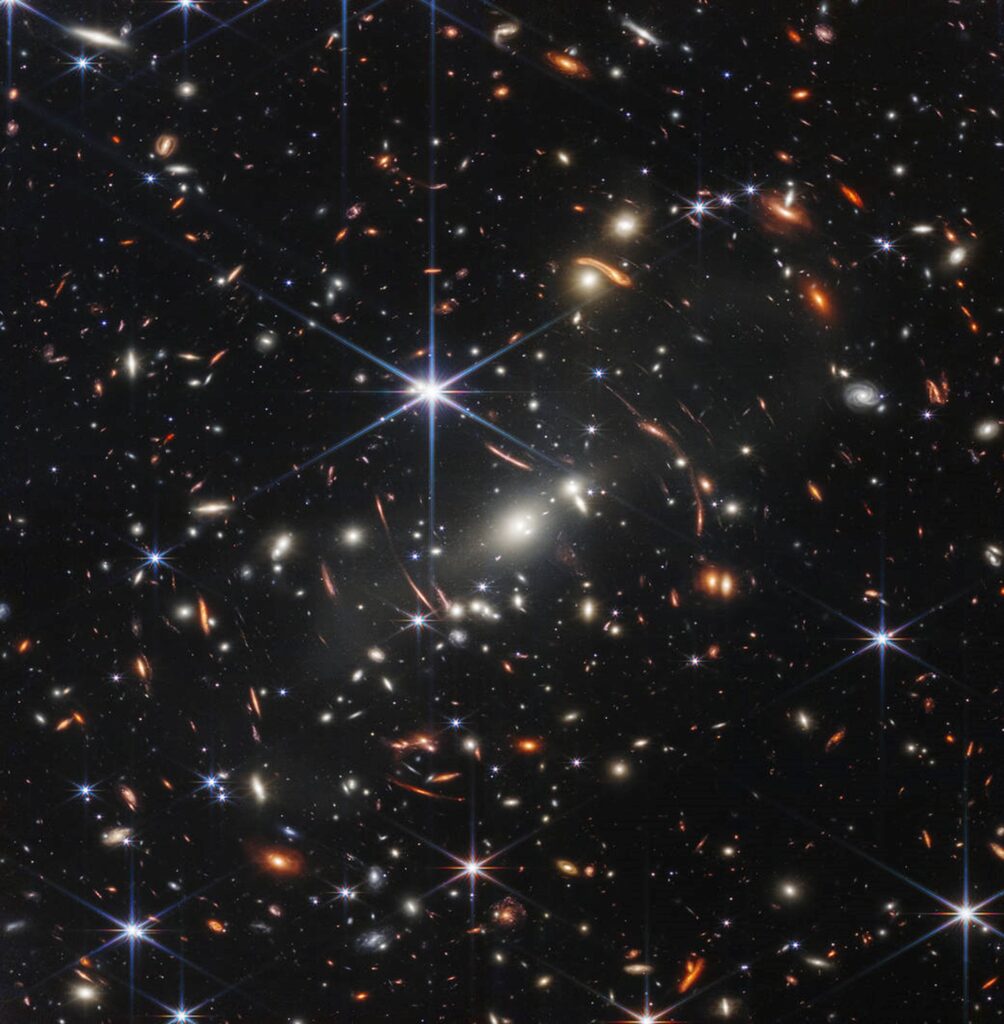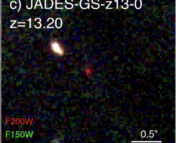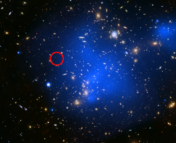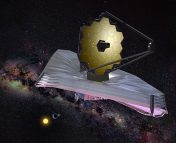
Riley Sharpe
University of Alabama
Riley Sharpe is a fourth year Physics and Astronomy PhD student at The University of Alabama. Her research is in multimessenger astrophysics, specifically observing active galactic nuclei that are potential sources of neutrinos in order to better understand how these sources work.
Paper Title: Discovery and properties of ultra-high redshift galaxies (9<z<12) in the JWST ERO SMACS 0723 Field
Authors: N. J. Adams, C. J. Conselice, L. Ferreira, D. Austin, J. Trussler, I. Juodžbalis, S. M. Wilkins, J. Caruana, P. Dayal, A. Verma, A. P. Vijayan
First Author Institution: Jodrell Bank Centre for Astrophysics, University of Manchester, Oxford Road, Manchester, UK
Status: Published in MNRAS (open access)
New Look at Old Galaxies
You have likely already seen the James Webb Space Telescope image of the galaxy cluster known as SMACS 0723. This image, one of the first released by the telescope also known as JWST, shows some of the earliest galaxies that humans have observed. Some of these early galaxies could be much more massive for their age than previous studies expected, leading to tension between these observations and the reigning model of cosmology. However, there could be an alternative explanation for these unexpected observations: we may not fully understand how JWST works yet. A paper by N.J. Adams, et al. proposes a solution to help us understand these novel observations.

Determining Redshift
Before we get into the paper, some background on how researchers determine redshift will be useful. Two common ways of determining redshift are through photometry and spectroscopy. Photometry is a technique for observing astronomical objects by measuring the flux, or amount of light, coming from those objects. It can be used to determine the redshift of a source by looking at large features in its spectrum, like the Balmer and Lyman breaks where a source’s flux drops off quickly at a known wavelength (shown in Figure 2).

Spectroscopy, a technique that measures a source’s flux at different wavelengths, can observe more detailed features in an object’s spectrum and can typically determine the redshift of objects more accurately than photometry. However, it is more difficult because it requires sources to be observed for much longer.
JWST Cailibration
So, why are the different ways to measure redshift important? Many papers that have been making headlines about JWST finding the earliest galaxies found redshifts of those galaxies using photometry, not the more accurate spectroscopy. Some of them even give caveats to their results, saying that they should be verified with spectroscopy. The paper by Adams et al. still does not use spectroscopic data, but they utilize updated JWST calibrations and different models from past papers, which result in some much lower redshift estimates.

The authors analyzed a section of the SMACS 0723 image (Figure 3). They reprocessed data from NIRCam, a near-infrared camera on JWST, using new photometric calibrations from in-flight testing that were released in July. These calibrations correct for the fact that the red NIRCam modules were overperforming by ~20%, meaning data processed using the older calibrations would show a higher flux than is actually present in longer wavelengths of light. Using those older calibrations likely affects redshift calculations, and as we continue to learn more about the performance of JWST, calibrations will undergo further updates.
Using the new JWST calibrations and new models for determining redshift allowed the authors to determine photometric redshifts that are in good agreement with the more precise spectroscopic redshifts determined by another team of researchers (Figure 4), a good sign for the accuracy of the photometric redshifts.

Old Models for New Galaxies
Once the authors processed the data with new calibrations, they searched for sources with redshifts higher than 9 (corresponding to galaxies that existed less than ~550 million years after the Big Bang). They found 7 sources (including 4 new sources) with redshifts greater than 9.
Now that they found galaxies and their redshifts, the next step is for the authors to determine the stellar masses of these galaxies. Currently, astronomers utilize star formation models from low redshift galaxies to estimate the stellar masses of high redshift galaxies. However, this can lead to biases resulting in galaxies that appear to grow too quickly based on our current models of galaxy formation. Although they used the low redshift models, the authors found their galaxies had stellar masses that are one-tenth the masses reported in other papers, or less.They also found that their highest redshift galaxies (the galaxies that formed soonest after the Big Bang) had the lowest masses. These results may help alleviate some of the tension that other scientists ran into when they found that galaxies may be growing faster than our current understanding of the universe allows.
Wait and See
What does this mean for the results coming from JWST?
Using the new calibrations reduced the redshifts calculated for these galaxies, and the authors found that the galaxies’ stellar masses were much lower than those found in other papers. This means that the surprising results where other researchers found galaxies that seem to be too massive for their young age may not be as concerning for our current understanding of the universe as we first thought. However, it is still too early to tell who is getting the most accurate results. As scientists continue to learn about how JWST operates and study very high redshift galaxies, we will have to wait and see if the new data support our current model of cosmology or provide evidence that we still have work to do.
Astrobite edited by Jessie Thwaites
Featured image credit: NASA, ESA, CSA, STScI




